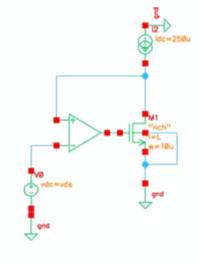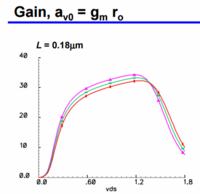AMSA84
Advanced Member level 2

- Joined
- Aug 24, 2010
- Messages
- 577
- Helped
- 8
- Reputation
- 16
- Reaction score
- 8
- Trophy points
- 1,298
- Location
- Iberian Peninsula
- Activity points
- 6,178
Hi guys,
Has anyone tried to plot the gm.ro using the EE240 test circuit? That's the one I am talking about:

I think I have tried everything that I can think of. Didn't manage to get the results:

I know that this must be the small signal gain, but how to get around the above shown circuit was impossible for me. It's funny that even at the school where those slides belong, say how to do it.
It's simple frustrating.
Has anyone tried to get the gm.ro using this circuit?
Regards.
Has anyone tried to plot the gm.ro using the EE240 test circuit? That's the one I am talking about:

I think I have tried everything that I can think of. Didn't manage to get the results:

I know that this must be the small signal gain, but how to get around the above shown circuit was impossible for me. It's funny that even at the school where those slides belong, say how to do it.
It's simple frustrating.
Has anyone tried to get the gm.ro using this circuit?
Regards.
Last edited by a moderator:


